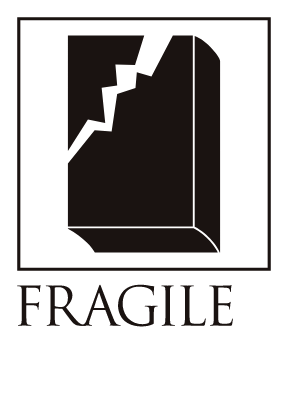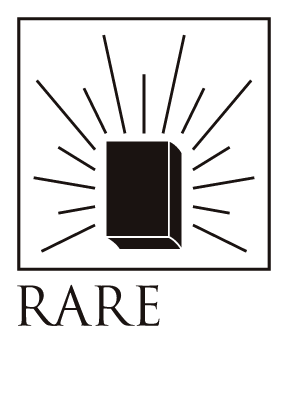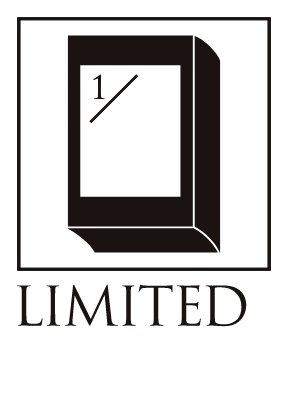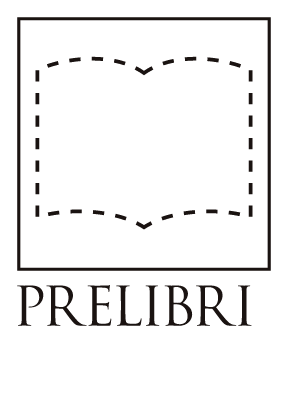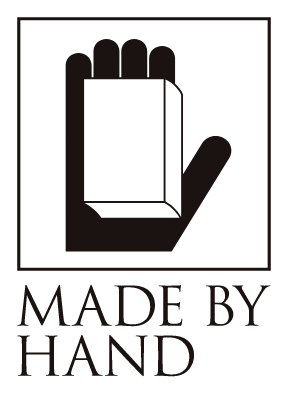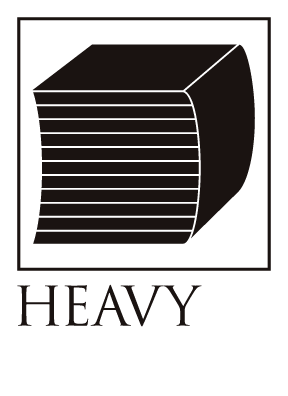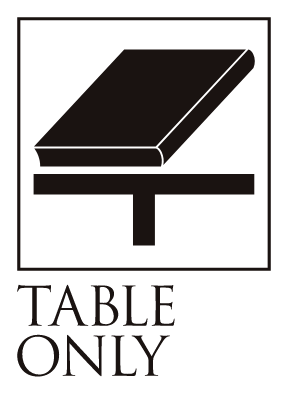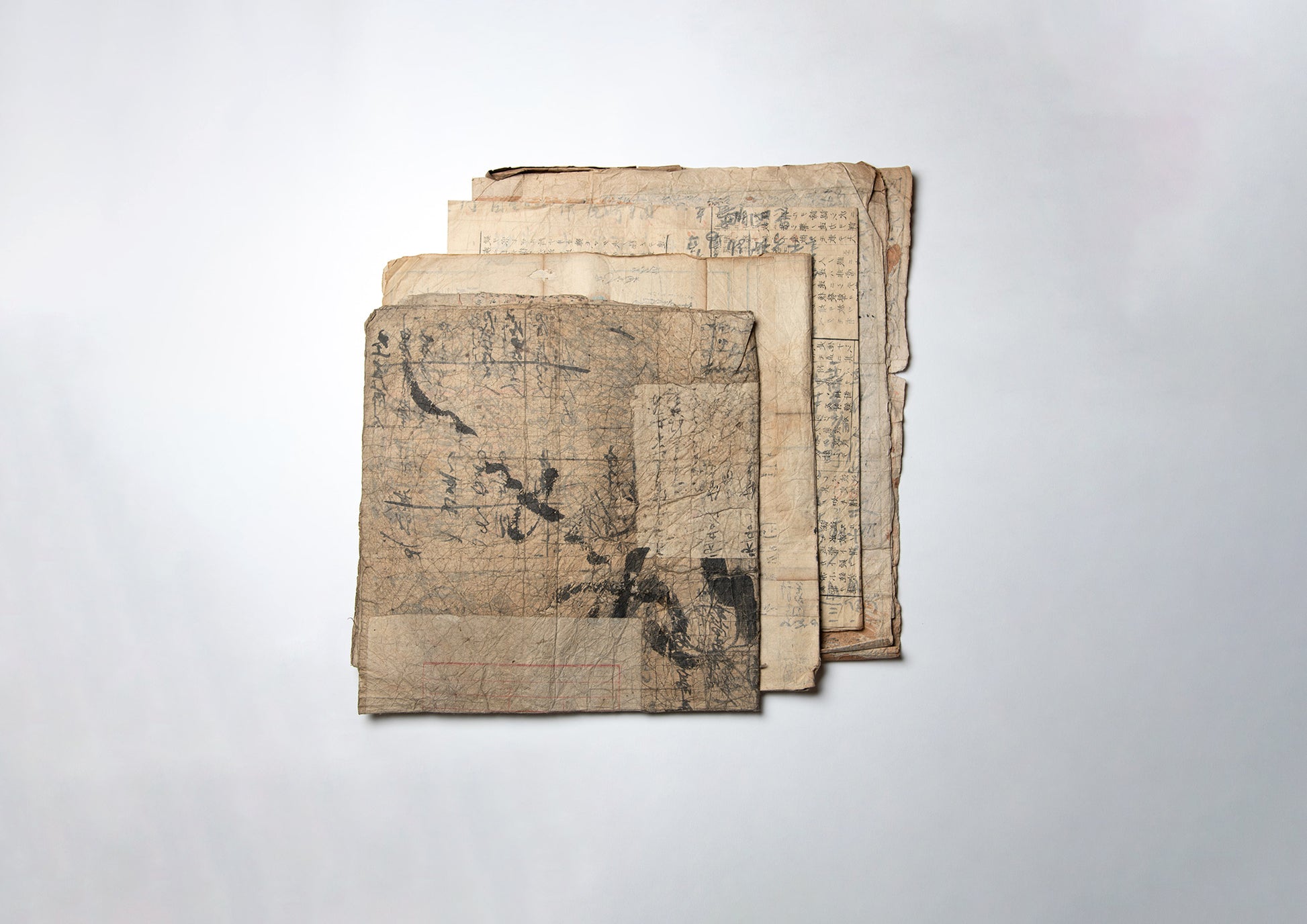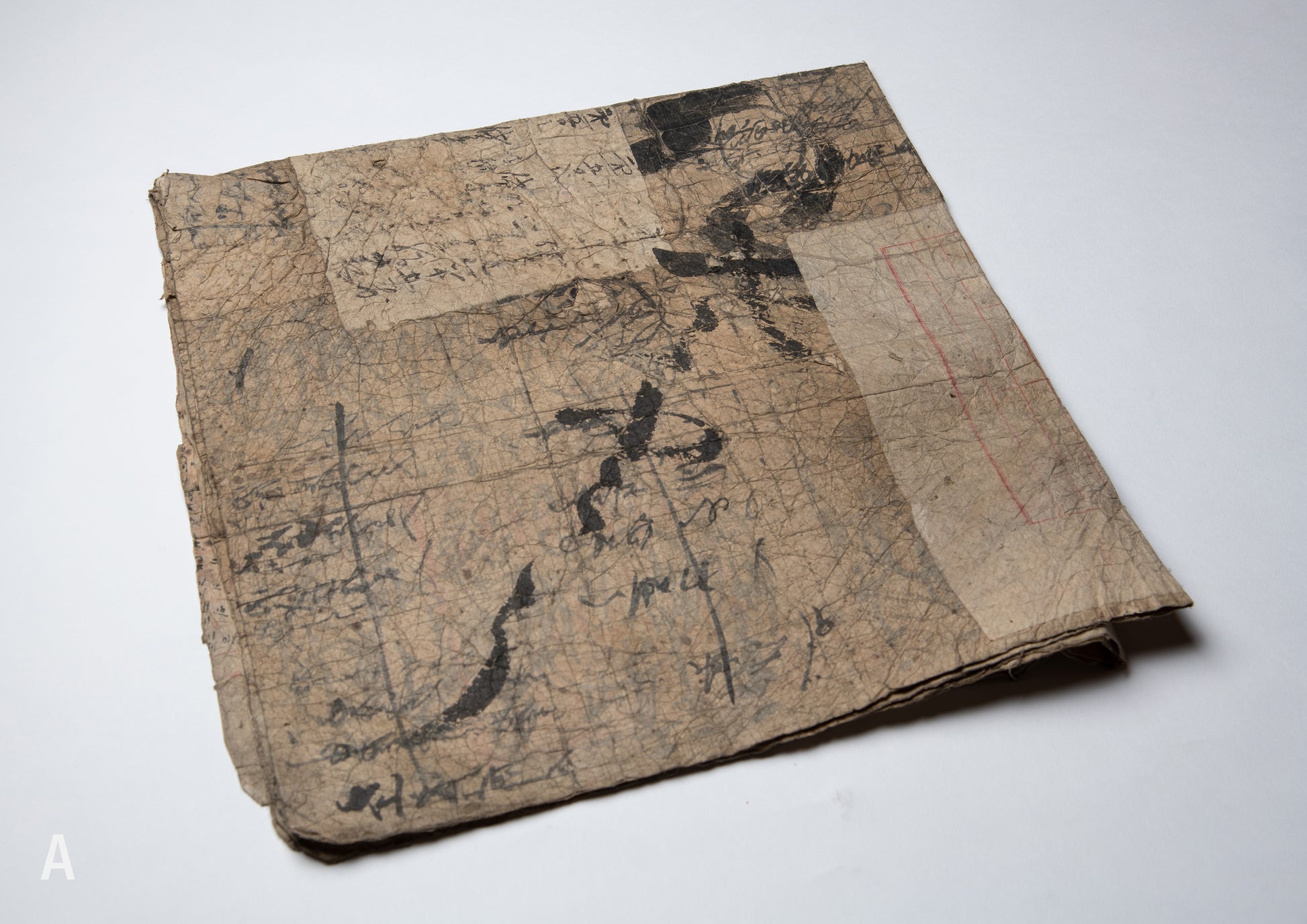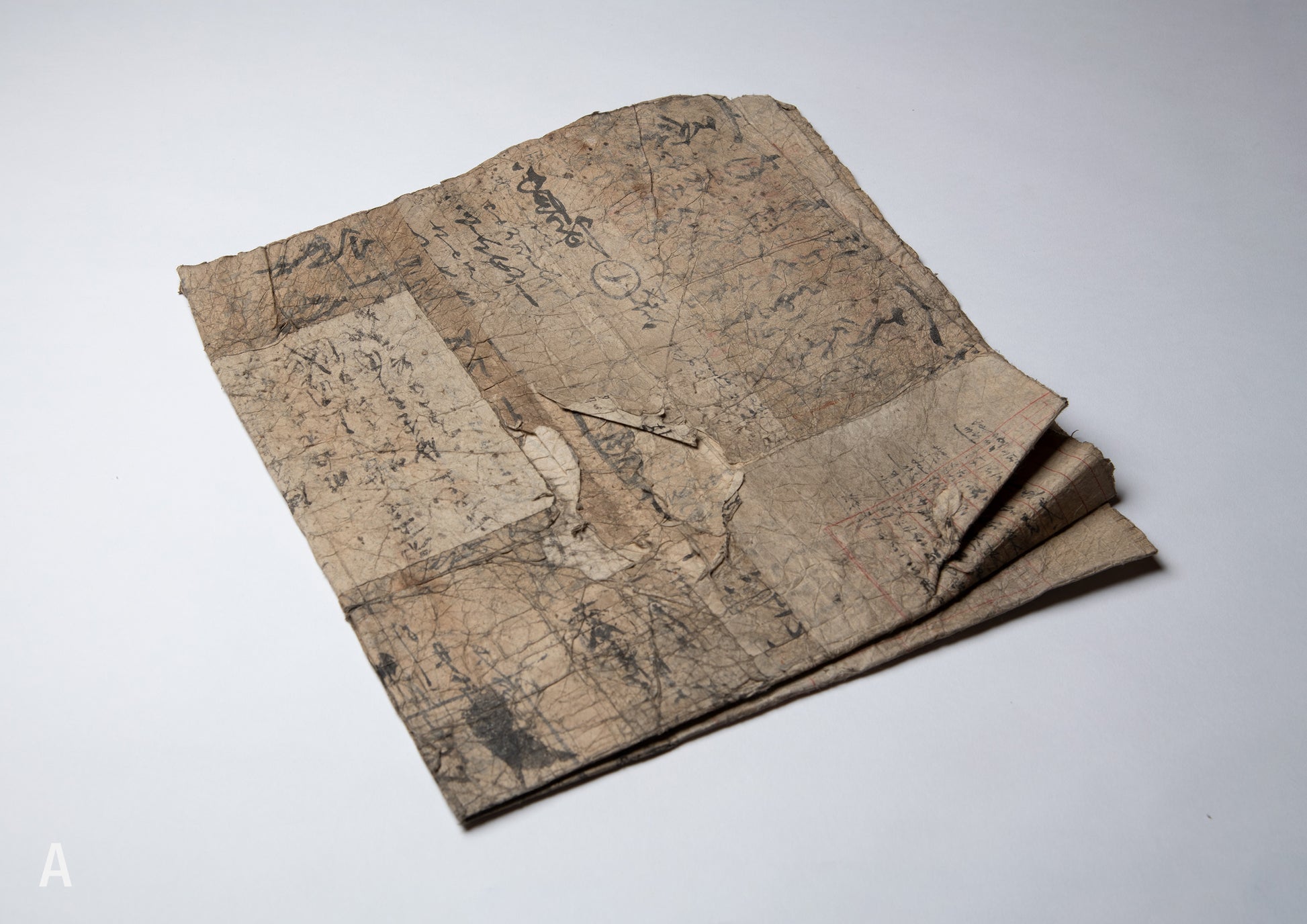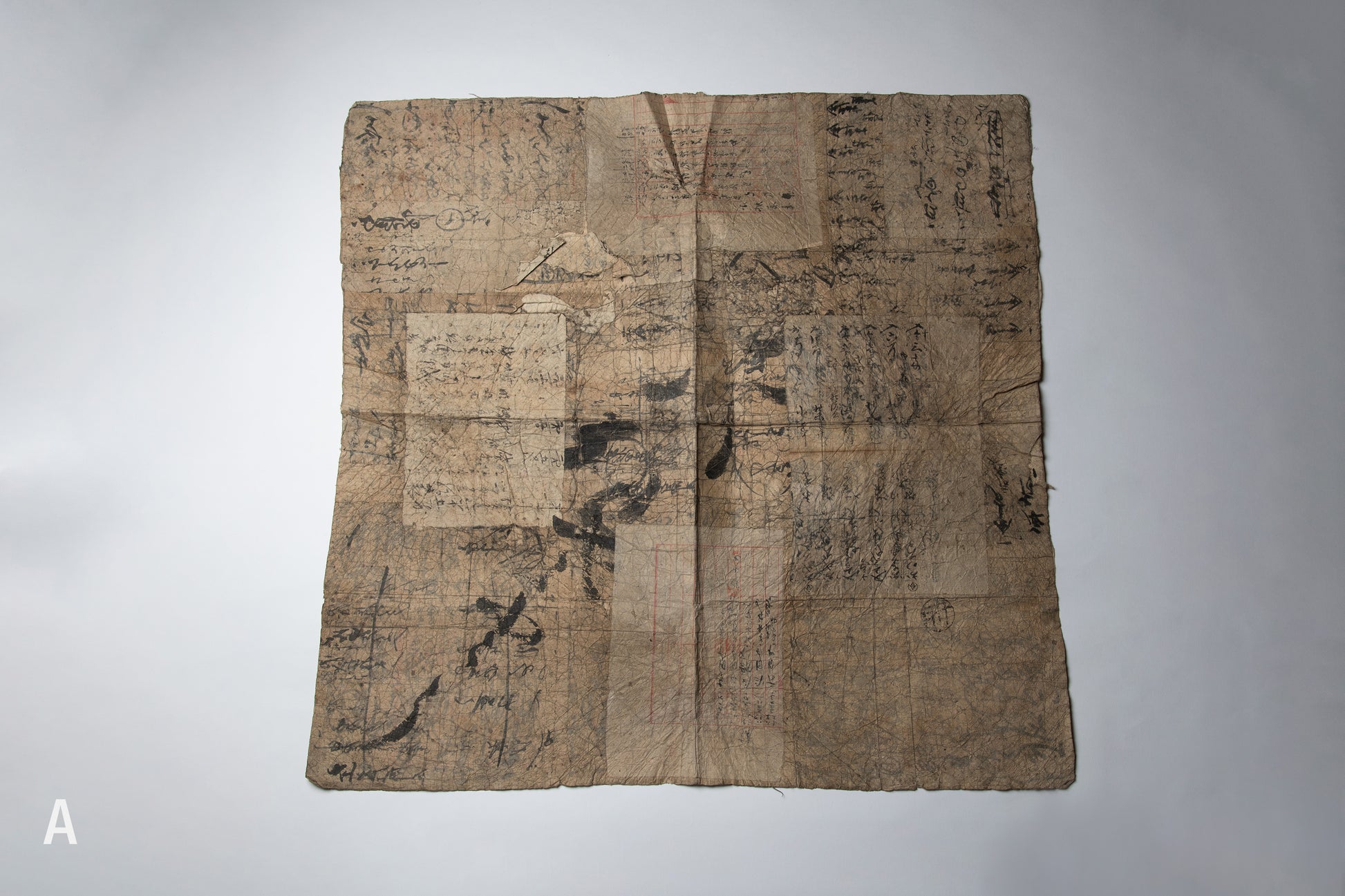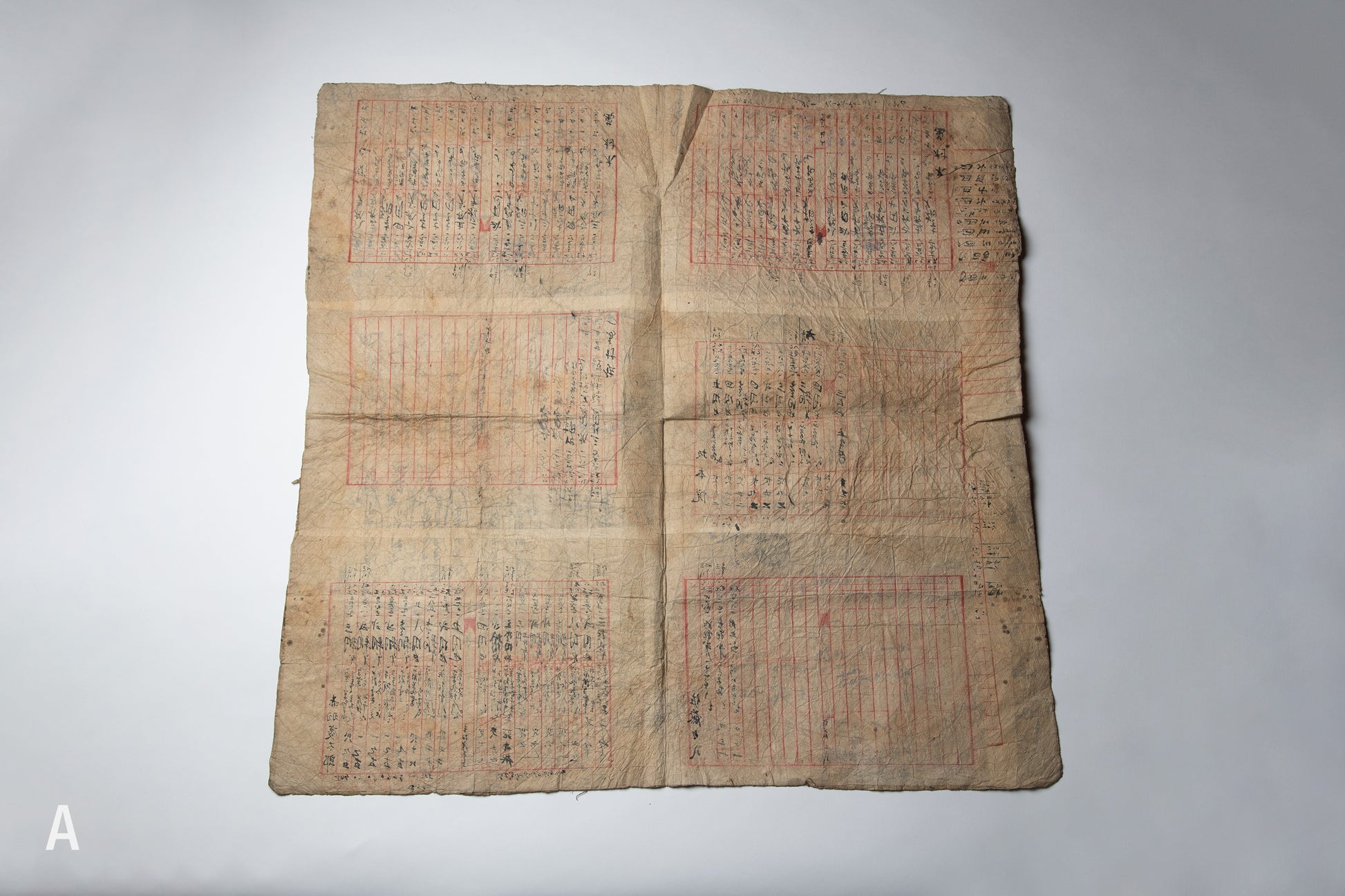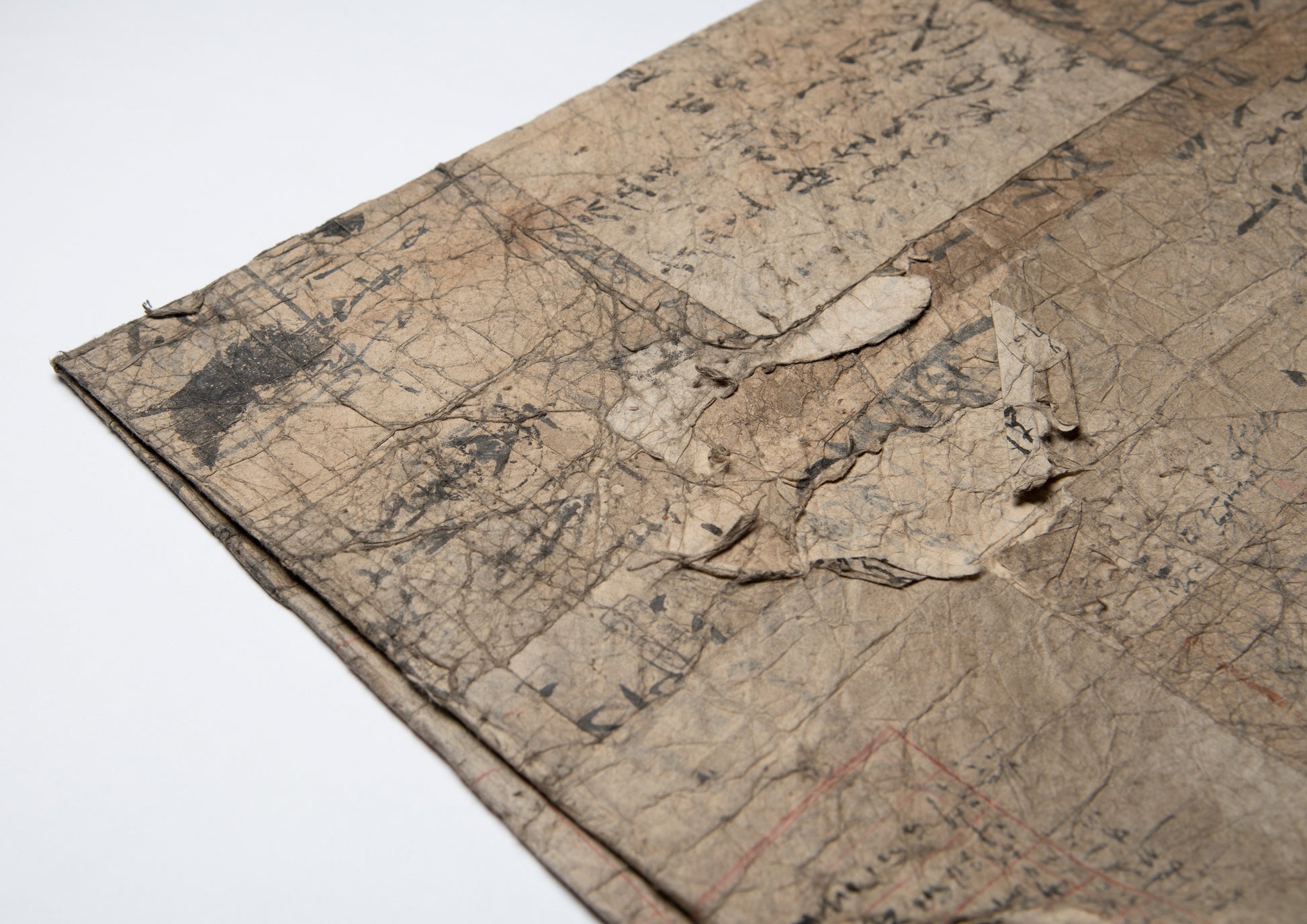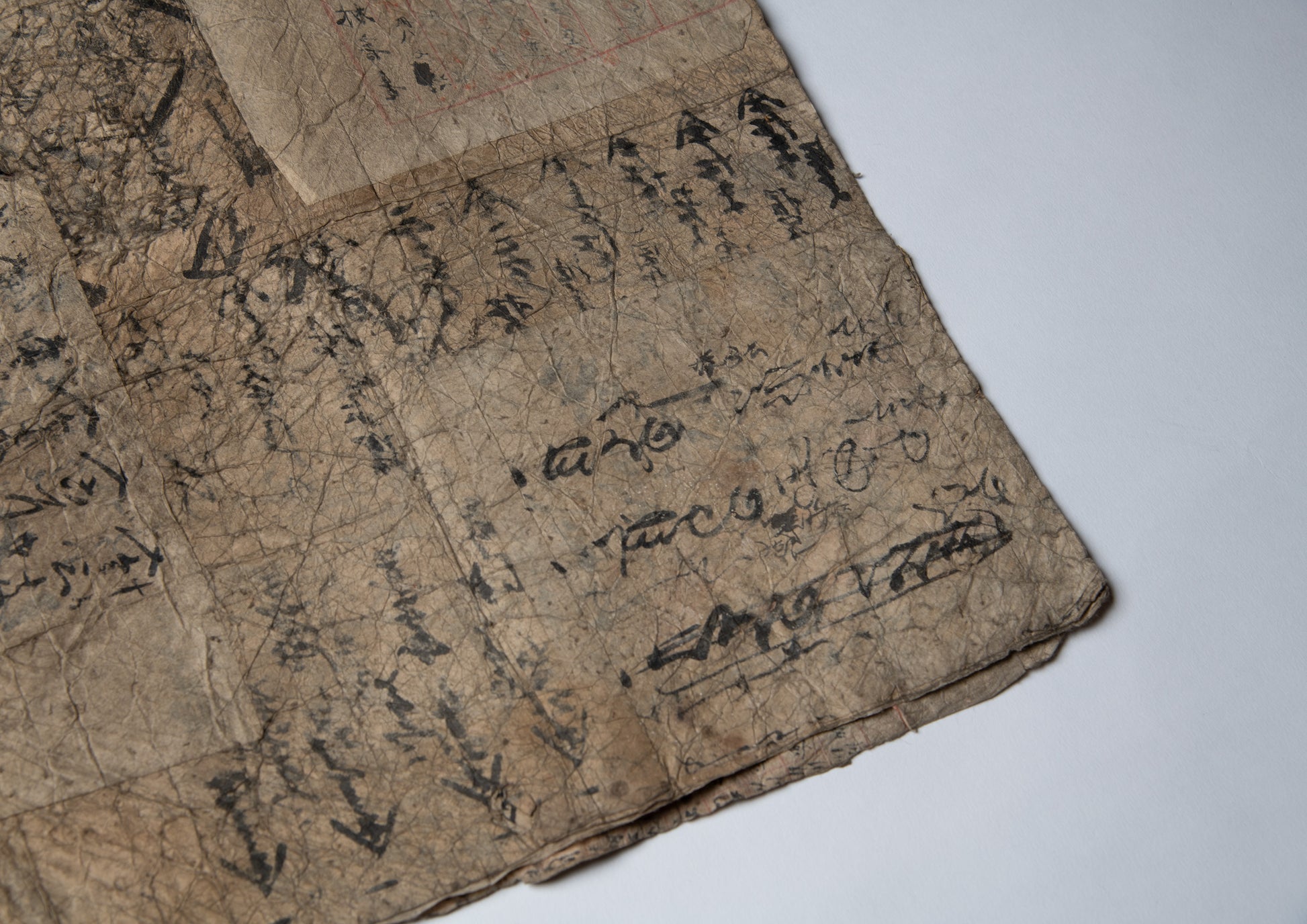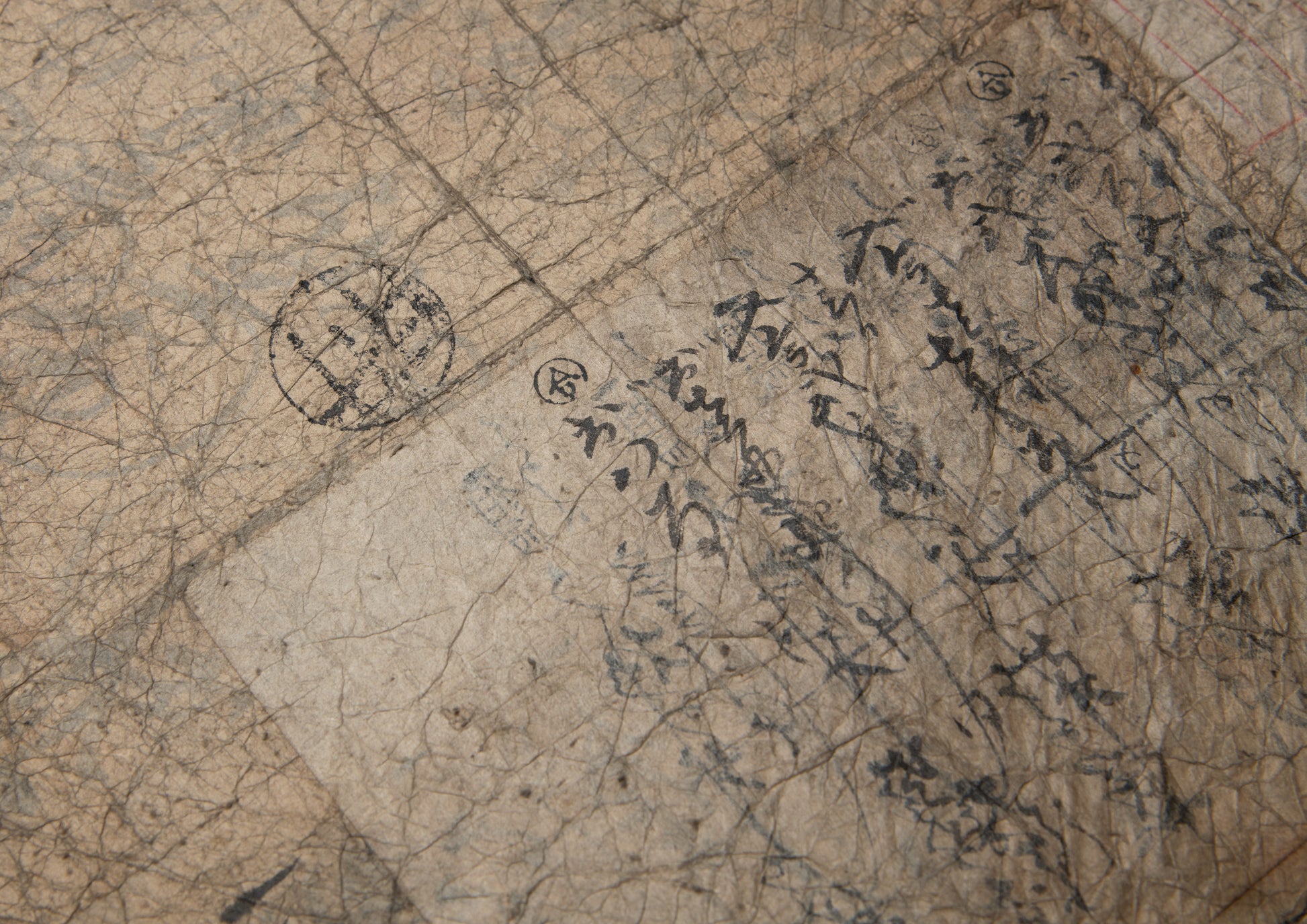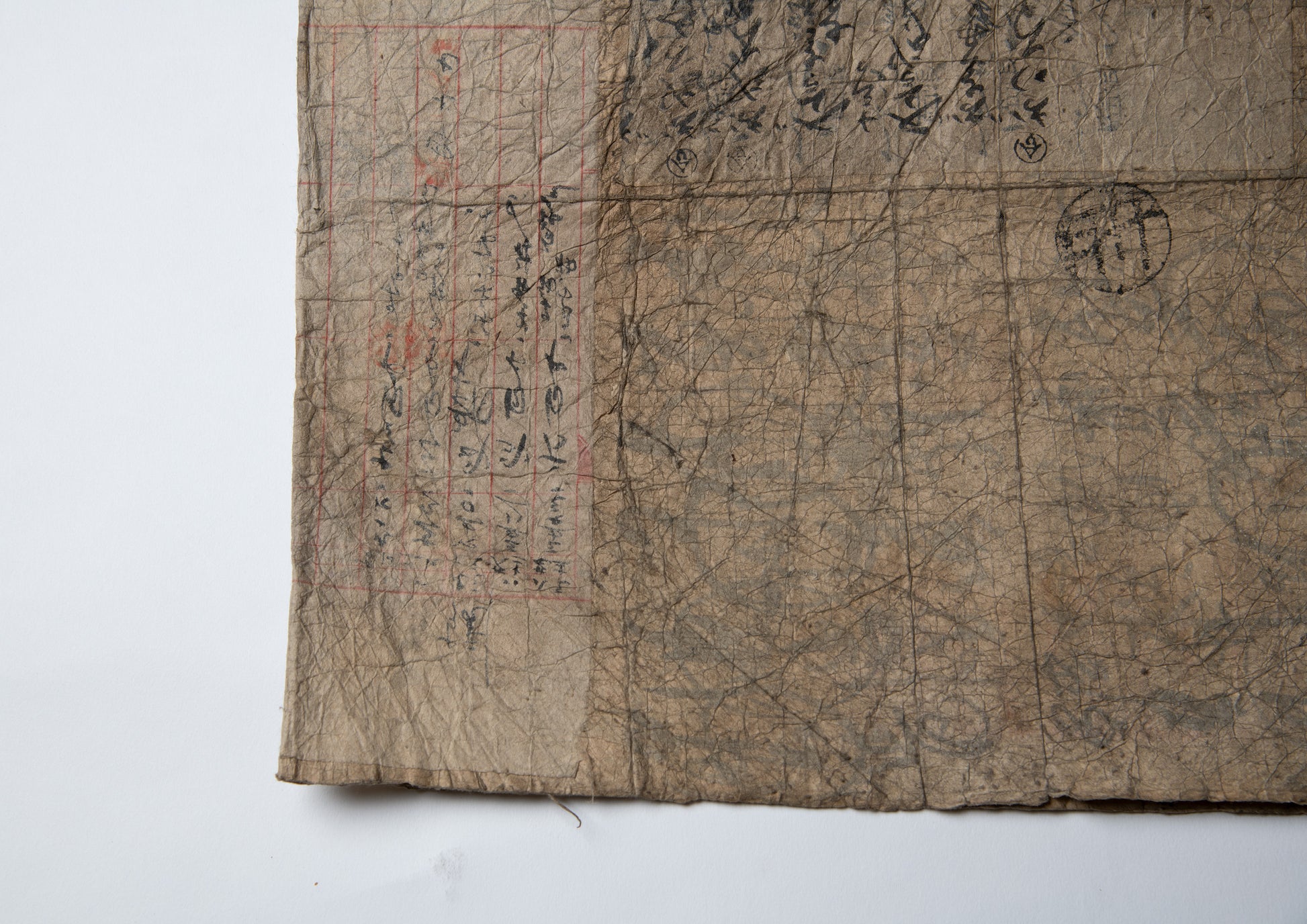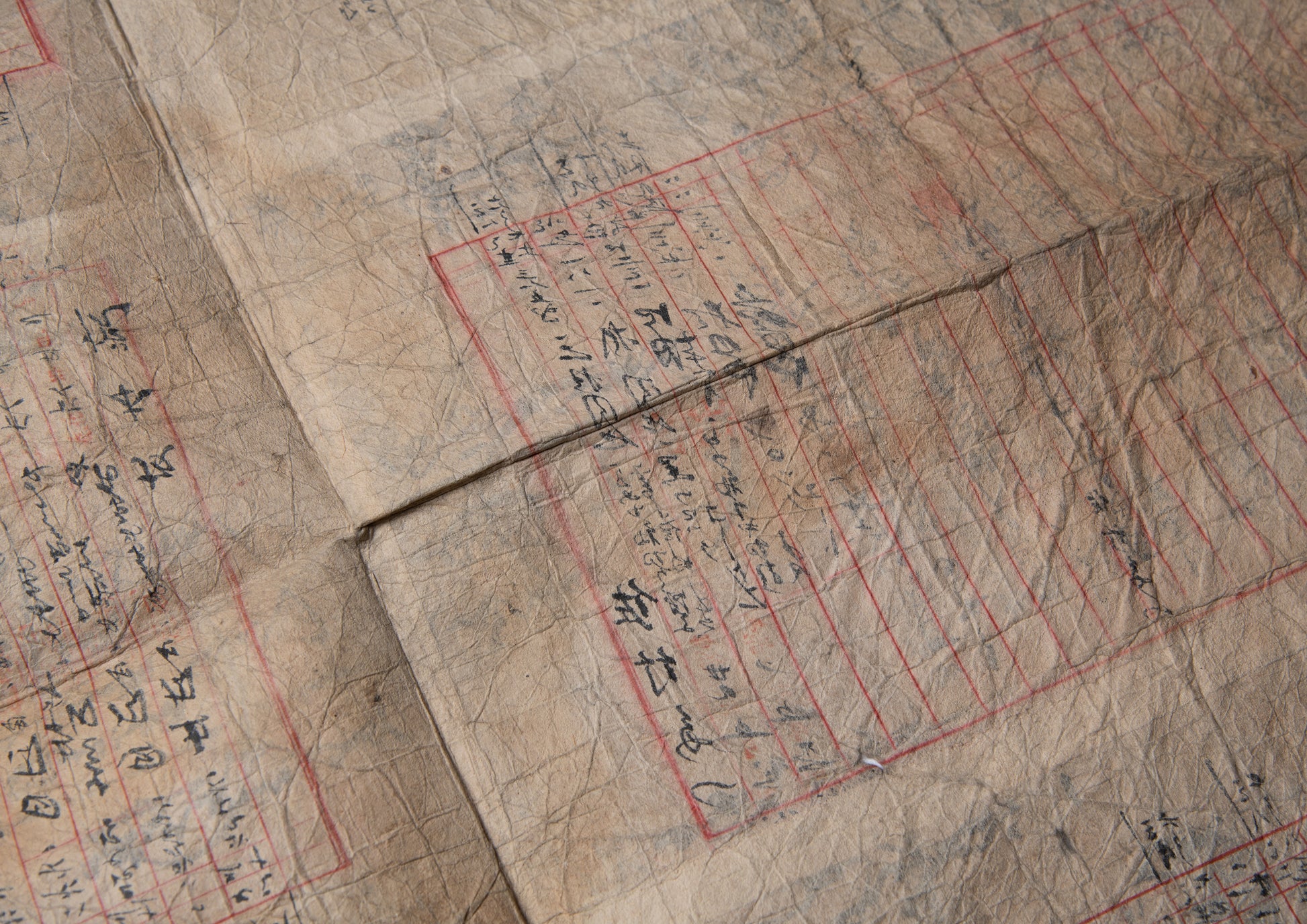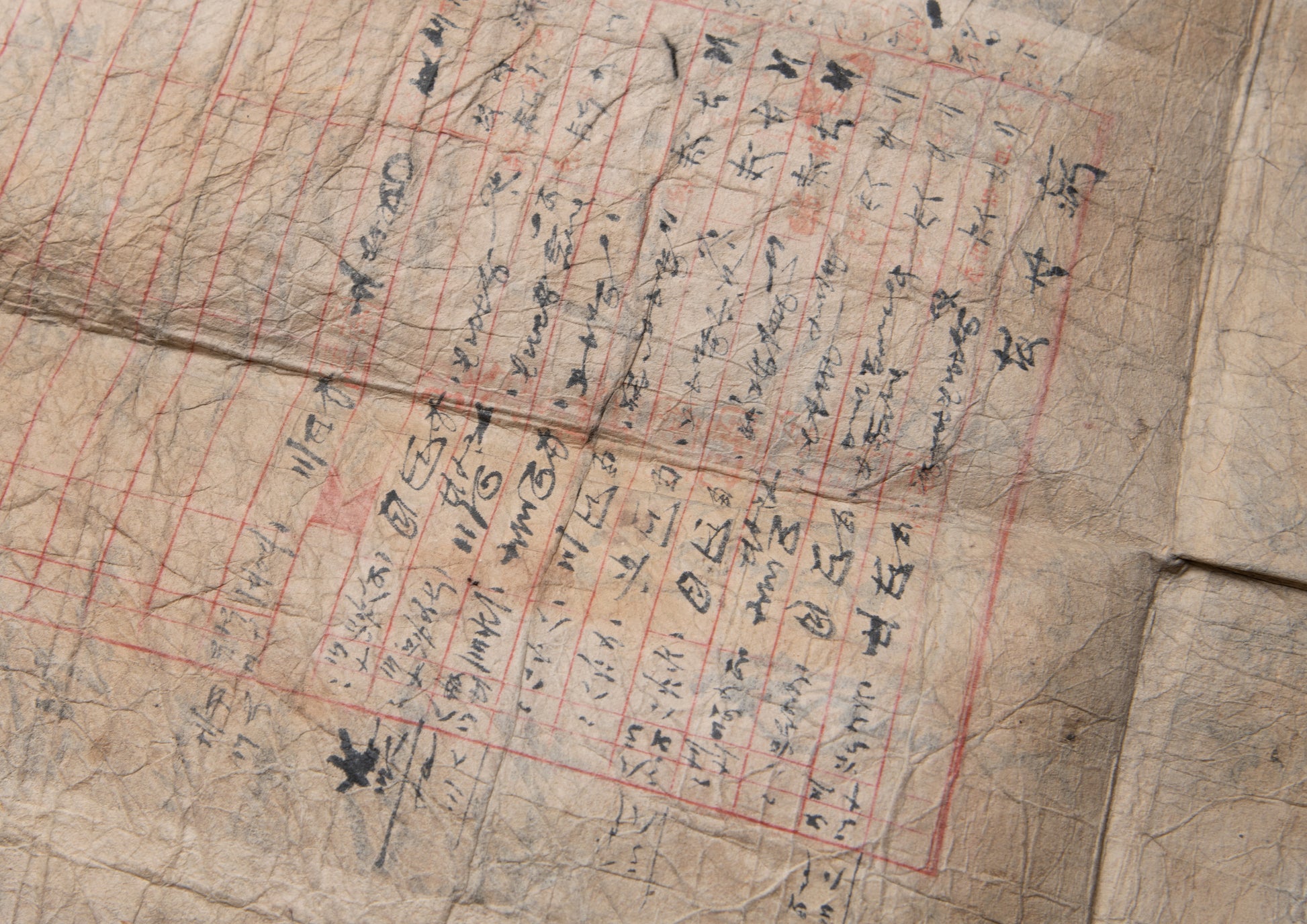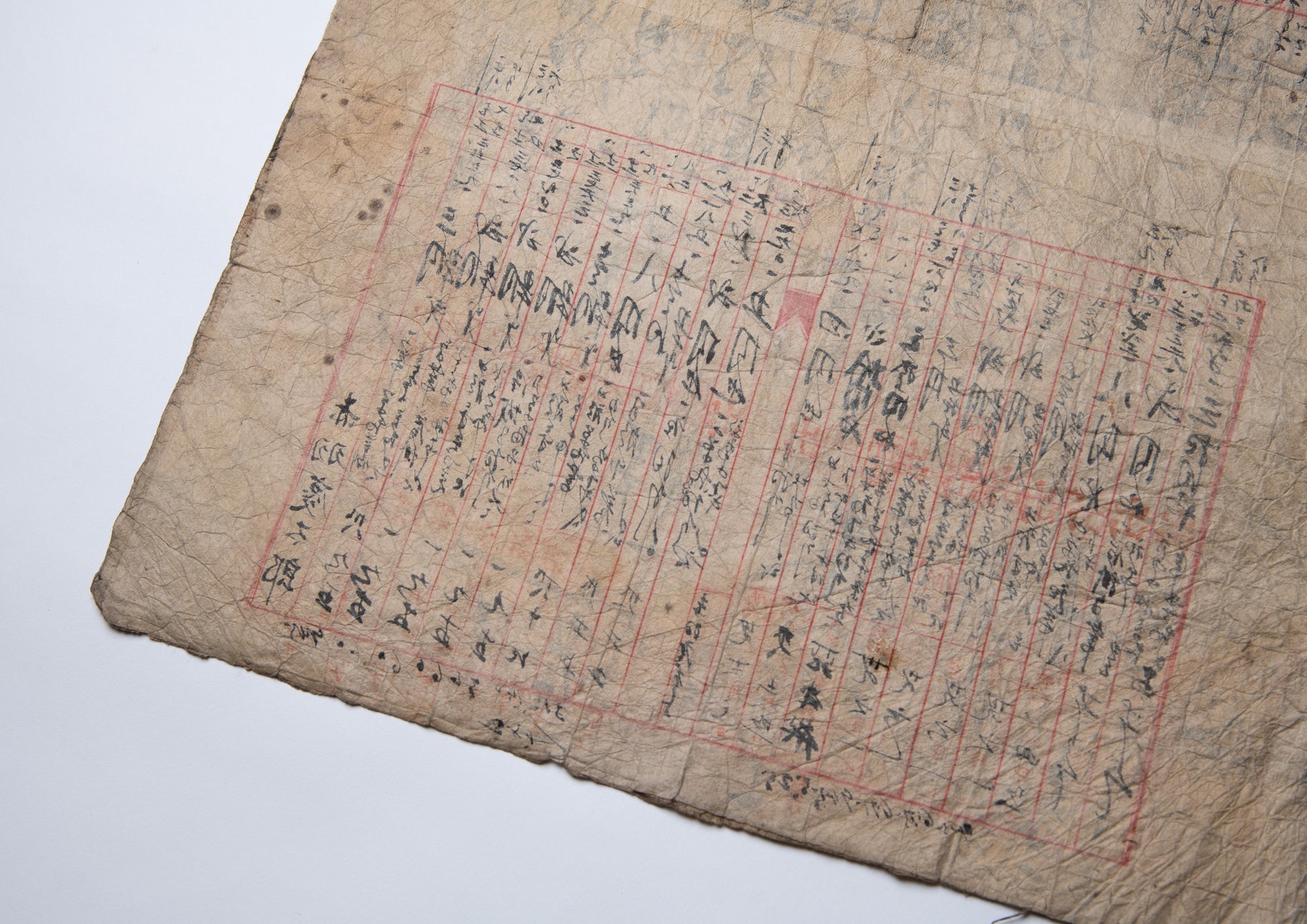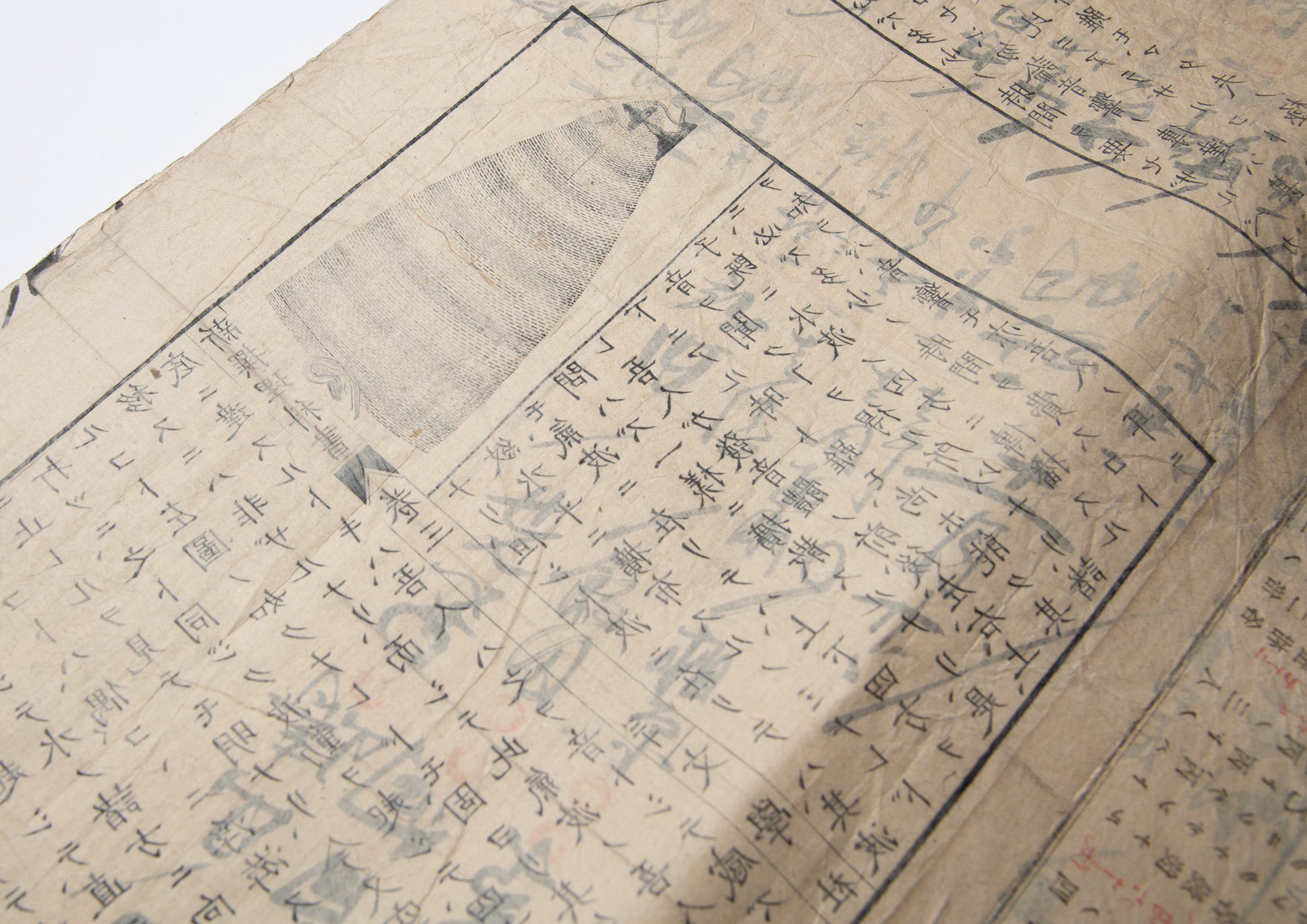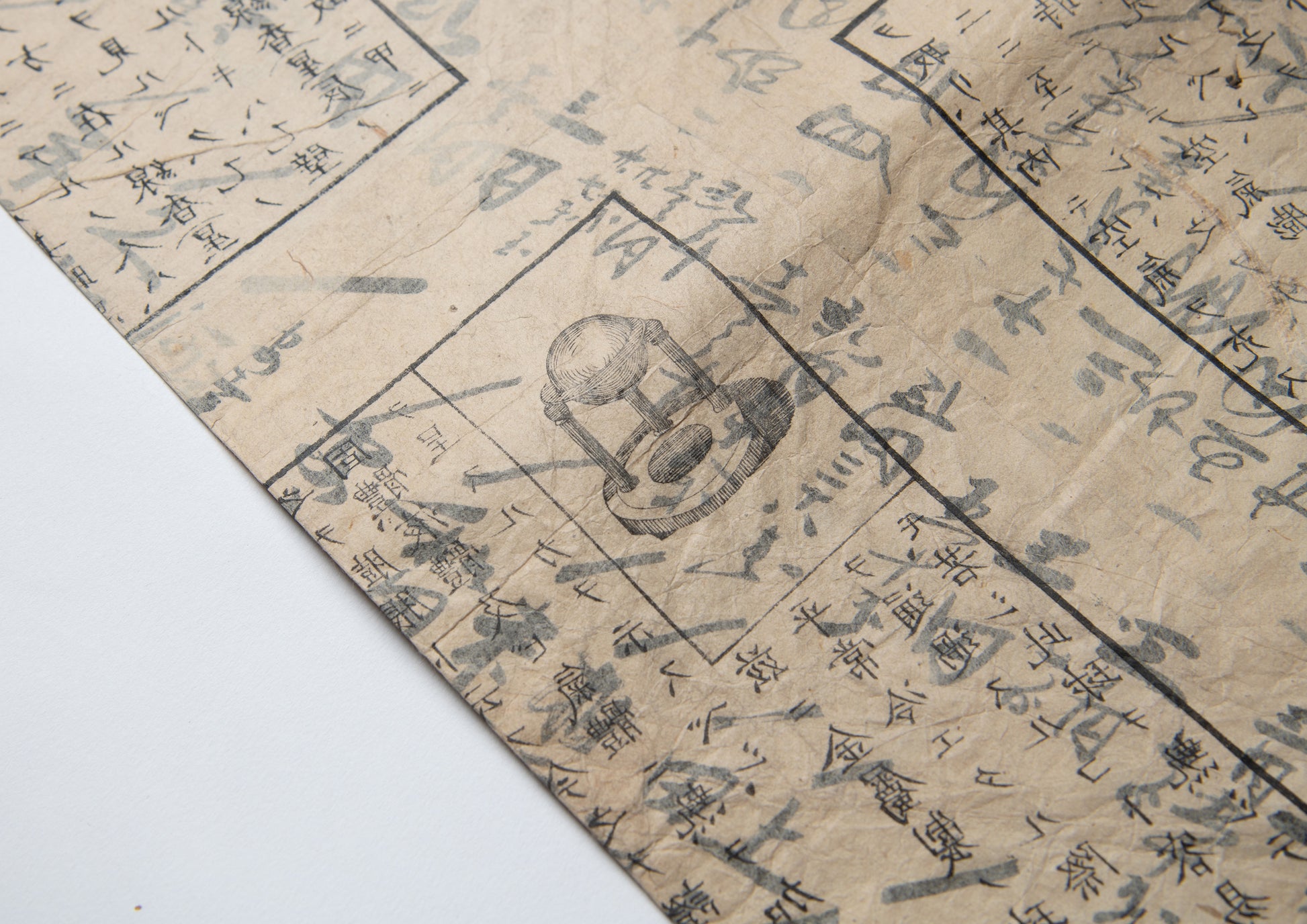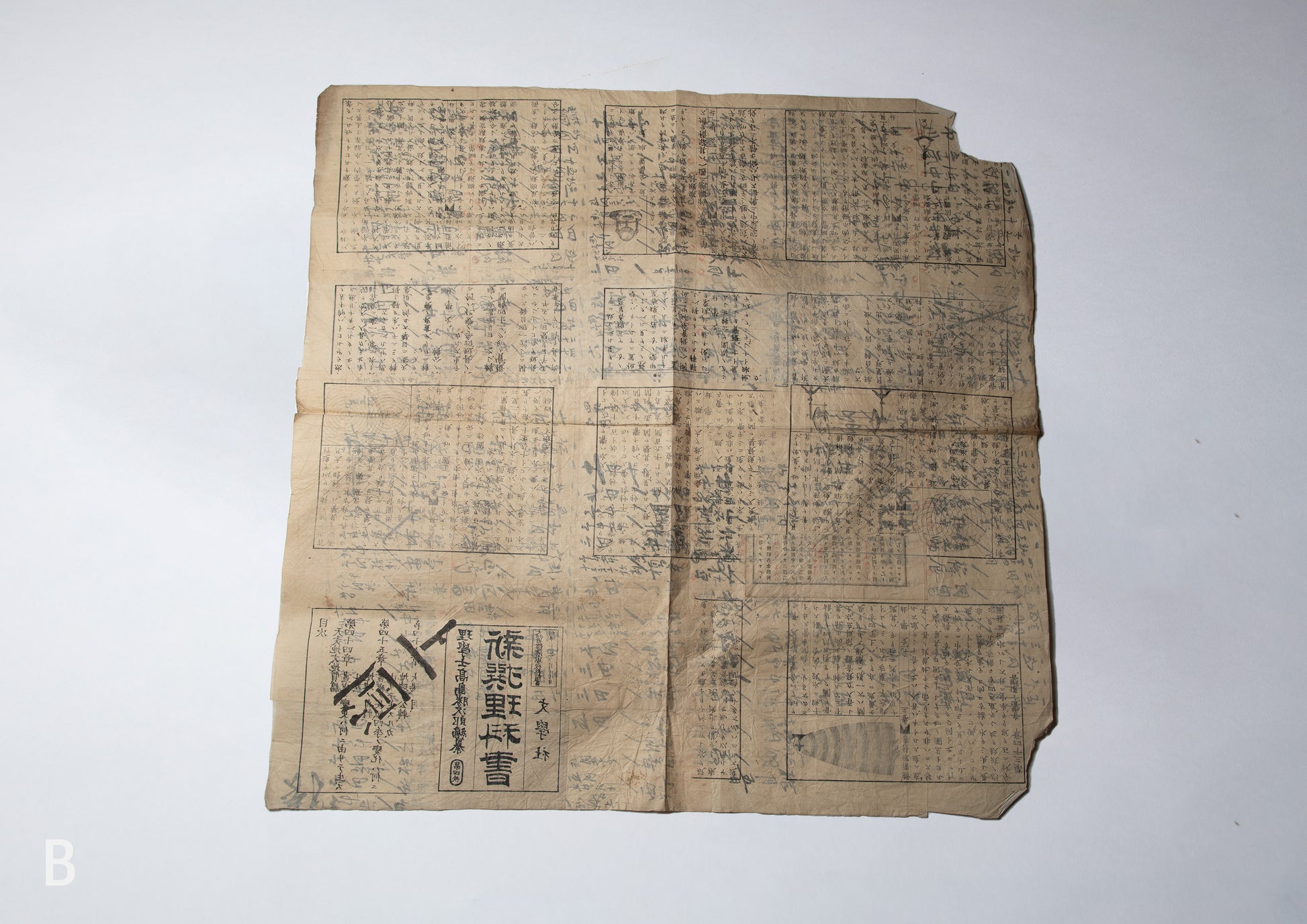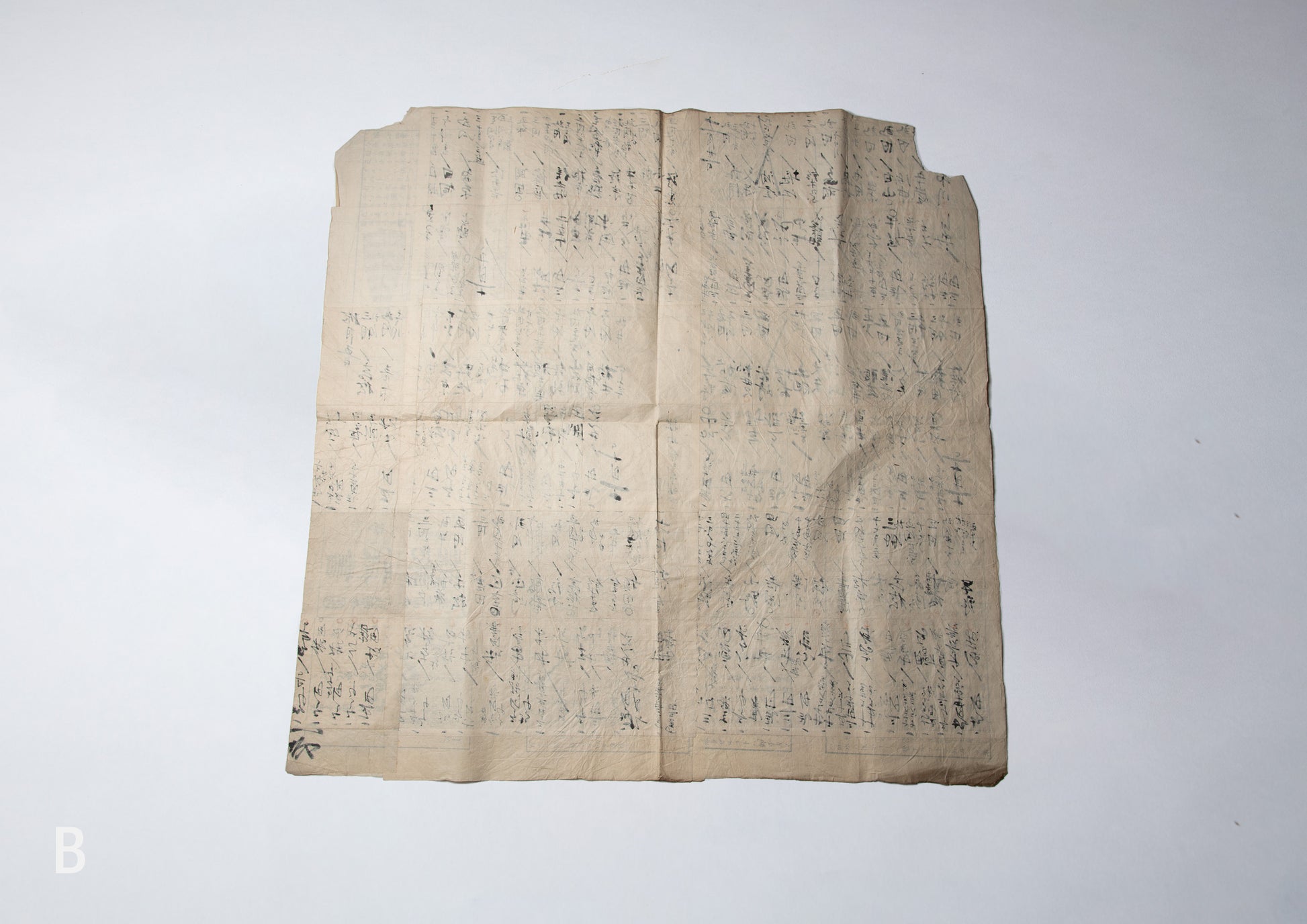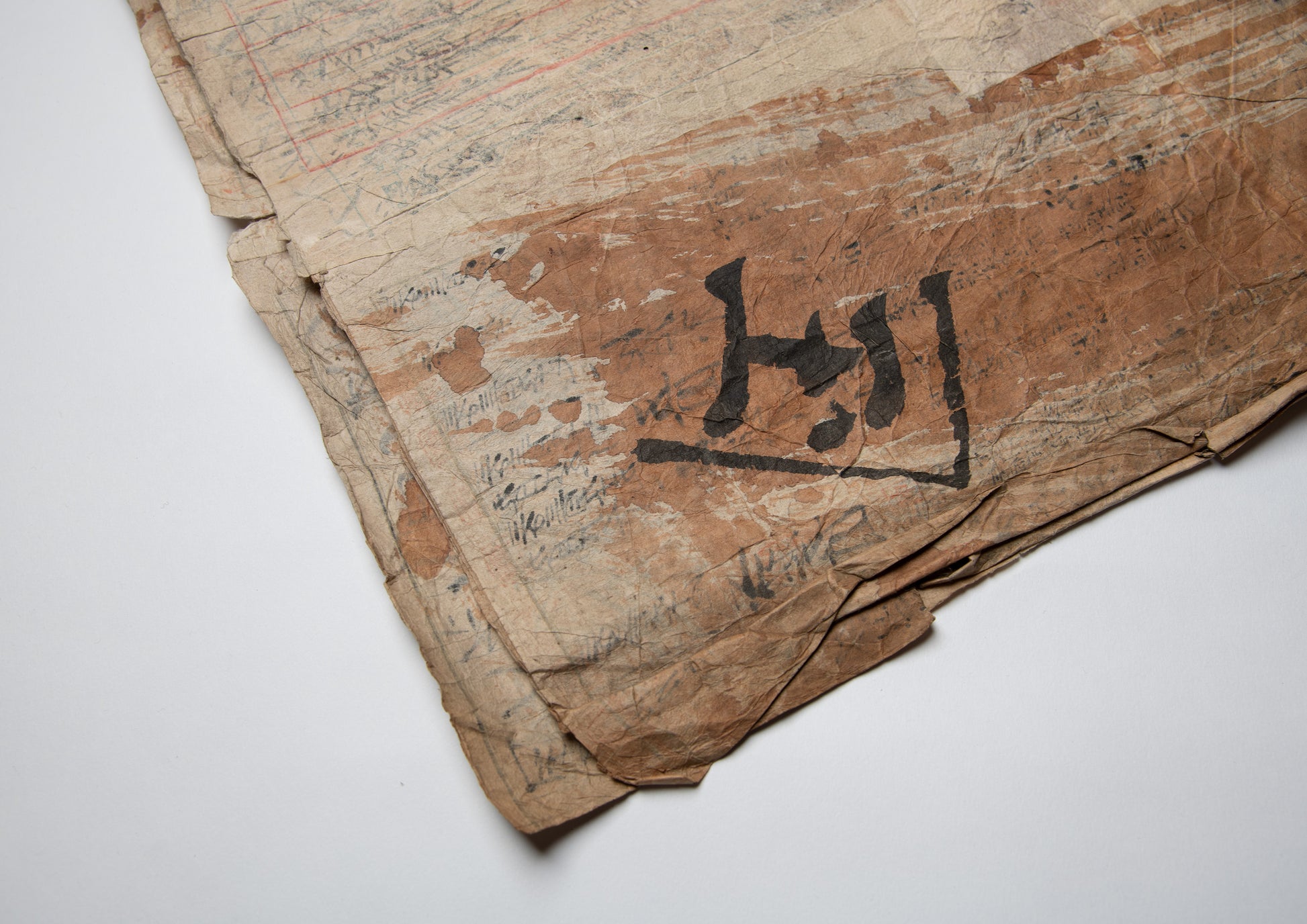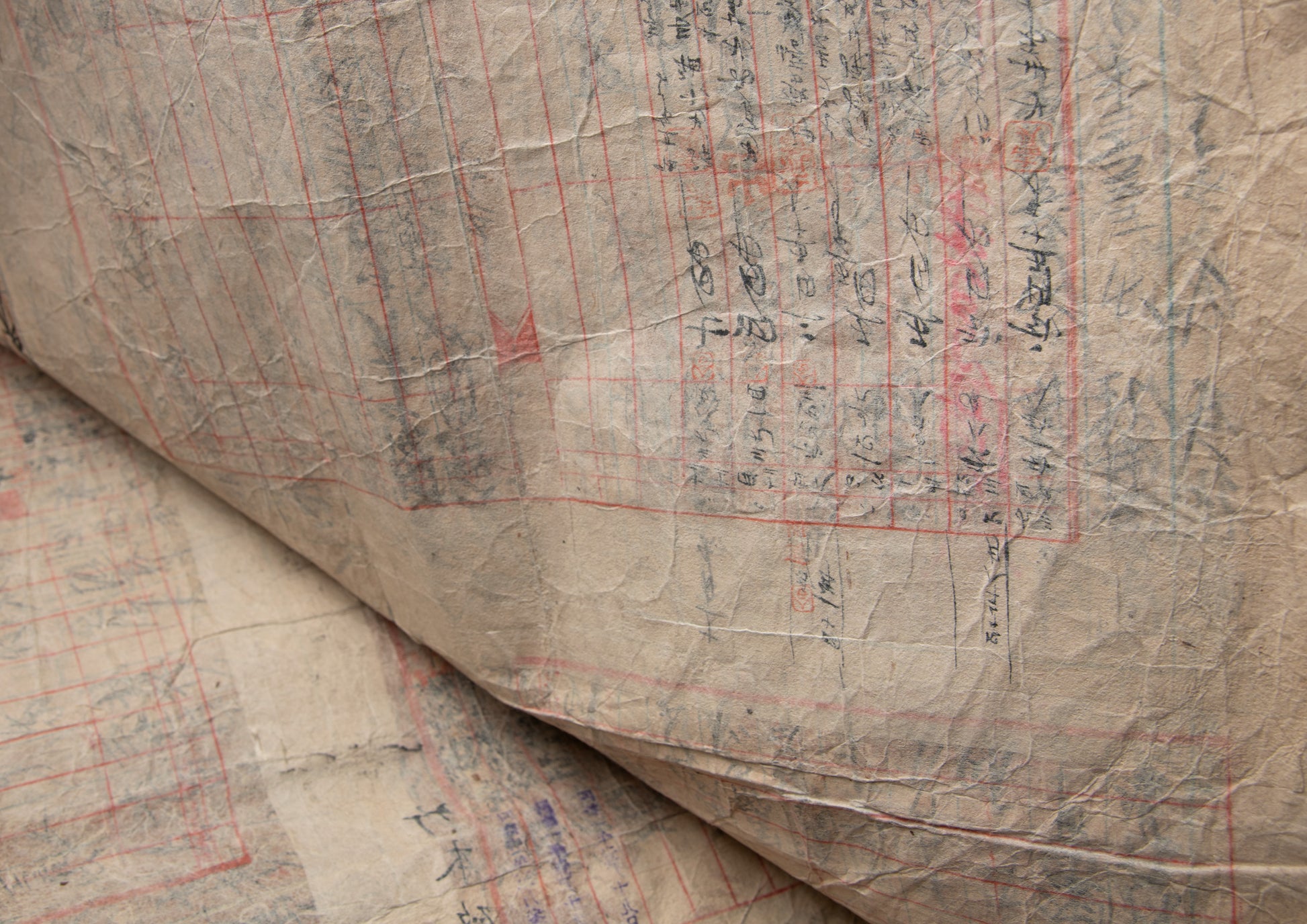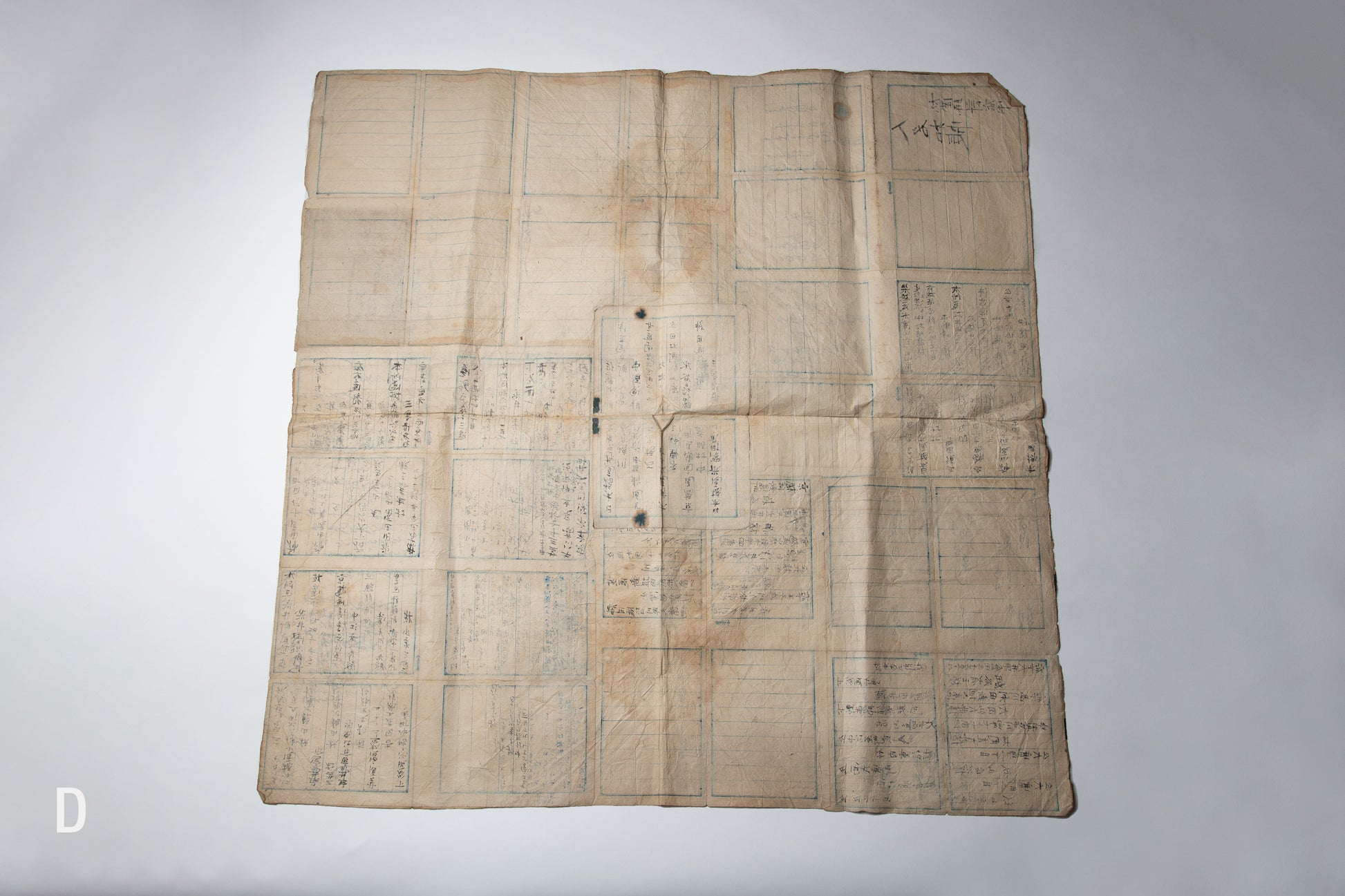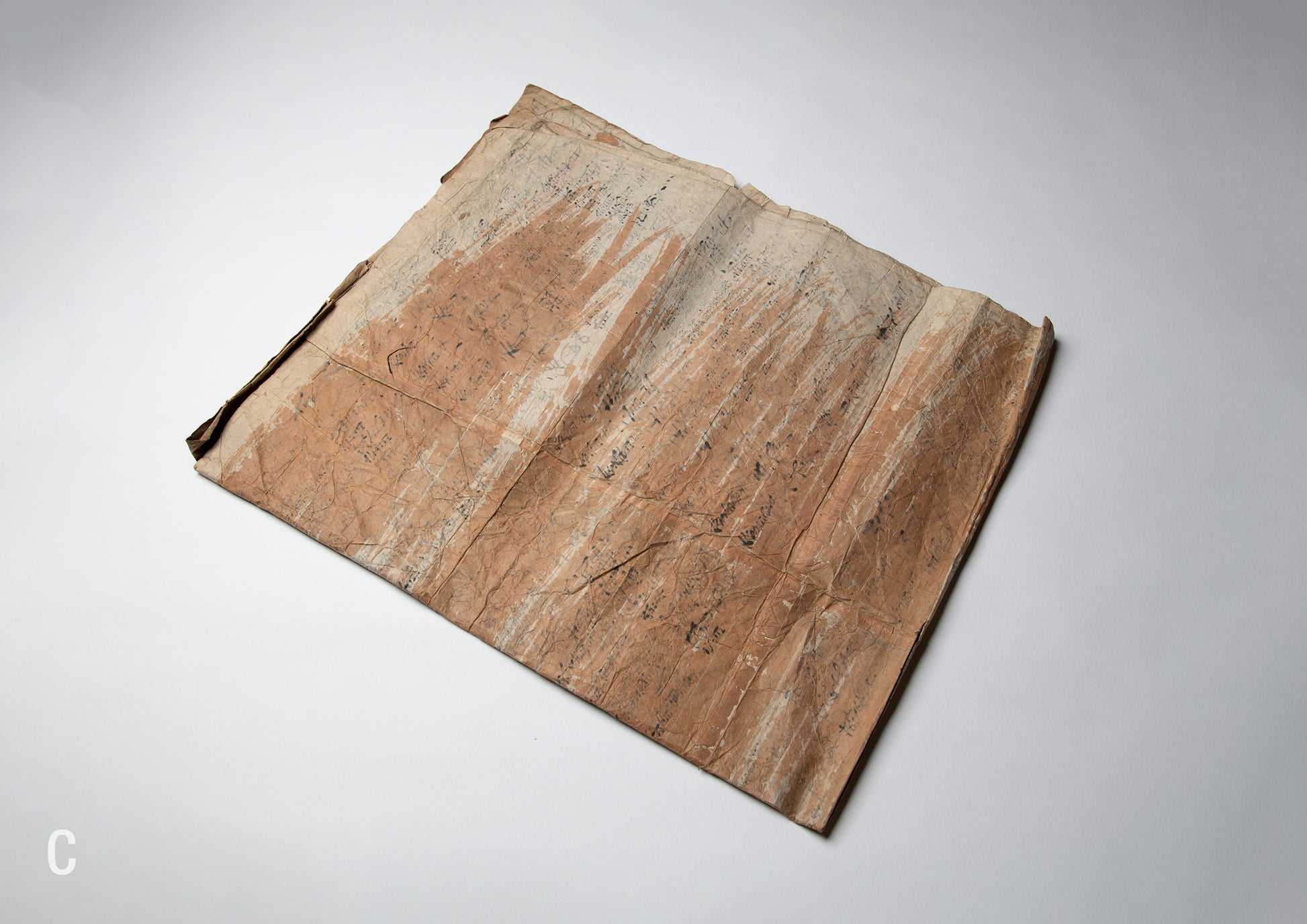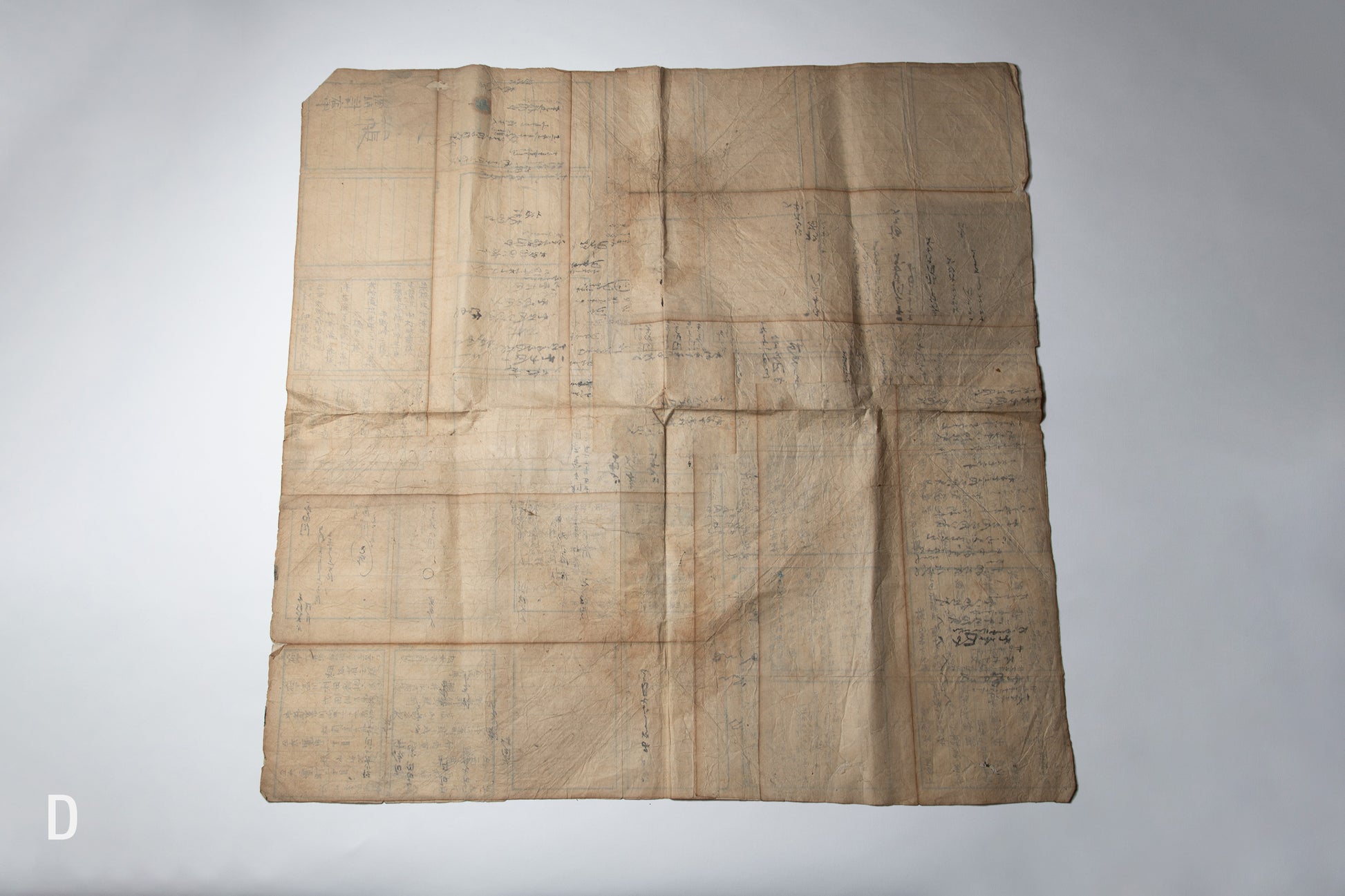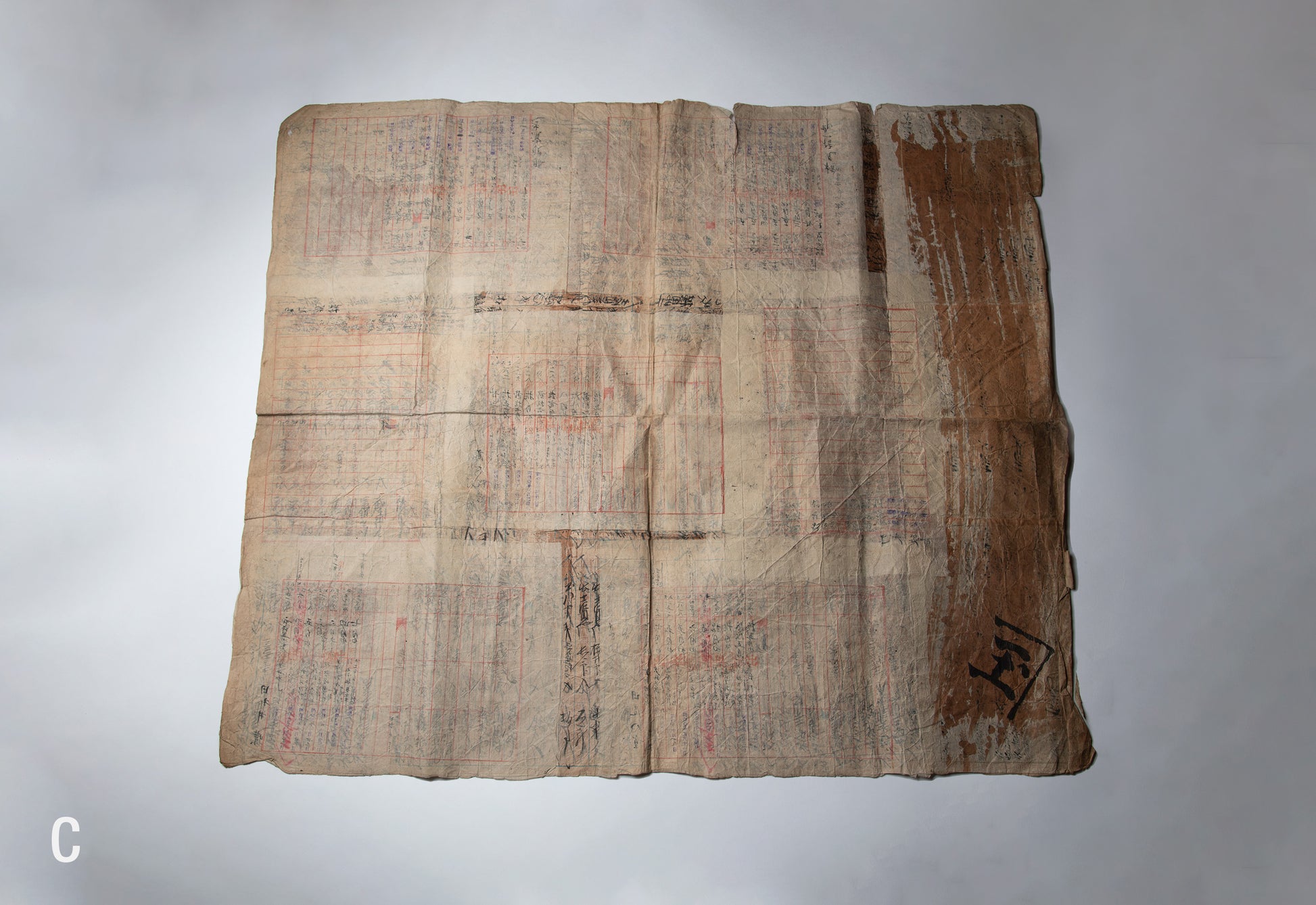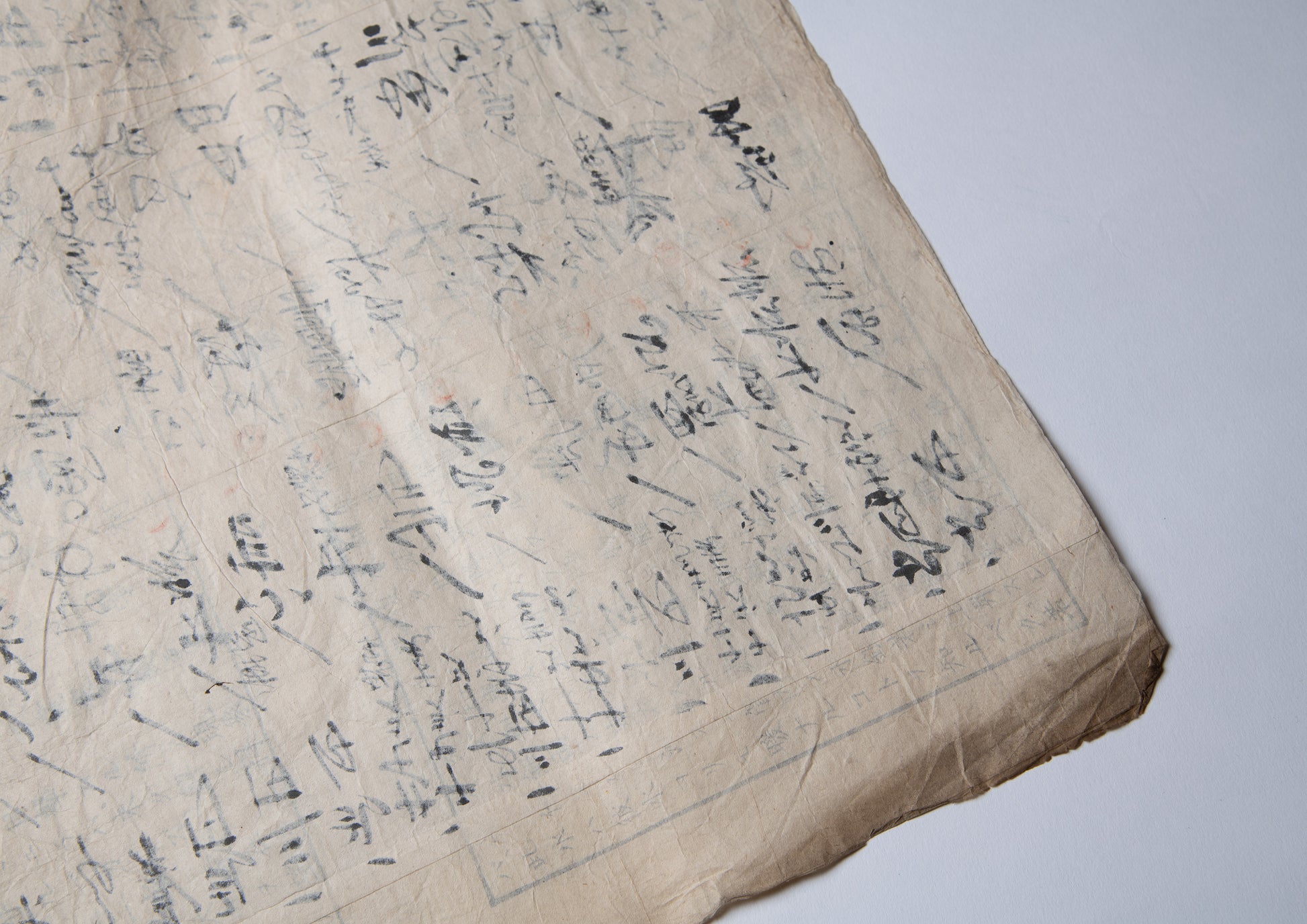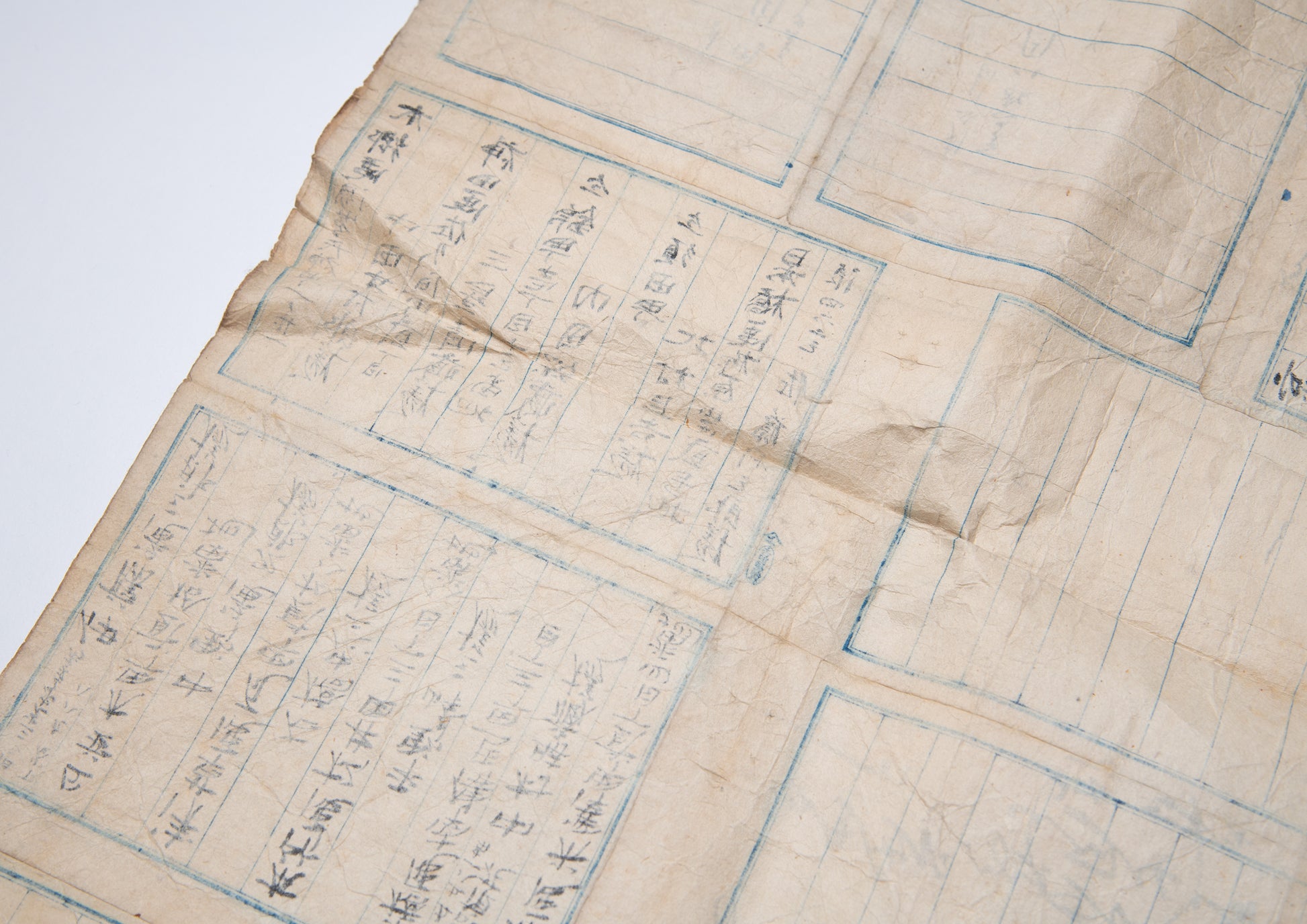Pawnshop paper/Shichiya-gami
Bibliographic Details
- Title
- Shichiya-gami / 質屋紙
- Artist
- Anonymous / アノニマス
- Year
- Late Edo Period ~ Taisho Period / 江戸末期~大正時代
- Size
- Square 700~900mm per side / 枡形(700~900mm / 1辺 )
- Materials
- Japanese paper / 和紙
- Edition
- Unique / 一点物
- Condition
- 一部欠け 小穴など 画像参照
Born from a pawn shop
Beauty in rags.
Late Edo period ~Taisho period
The name "pawnshop paper" is merely a convenient name, and the correct name is "tatami paper (folding paper) used by pawnshops." To avoid a long name, we will call it "pawnshop paper" for convenience. However, before that, it seems that the word tatami paper may not be understood in the first place.
Tato paper is a wrapping paper used to protect items such as tools and clothing when they were stored. It is a paper wrapping with sleeves on the top, bottom, left and right sides, and is tied with a twisted paper string to store kimonos. Would you understand if I told you that this wrapping paper is still the most popular tato paper in use today?
As you know, a pawnbroker's job is to lend money for a certain period of time using items as collateral. Therefore, pawnbrokers have an ever-increasing number of items that they must carefully store. When it comes to pawned items, brand-name items have probably only become popular since the bubble era, and the main items have long been precious metals and kimonos. Other items that were pawned included ornaments, antiques, tools, and I've heard that there was a time when even pots, kettles, and futons were used as pawns. Either way, it's not hard to imagine that a large amount of wrapping paper would have been needed to store pawned items of various shapes, sizes, and weights.
Another important tool of the pawnbroker's trade is the ledger. It contains detailed records of what was entrusted to which store on what date, month and year, and when the repayment deadline is. Pawnbroker's ledgers from the Meiji period to the 1950s can sometimes be found in the market, but they are all relatively large and thick, bound in Japanese binding. They are important documents, but once the storage period has passed, they simply become a pile of unnecessary paper.
Leaving aside the question of whether someone had a sudden inspiration while looking at the ledgers and wrapping paper about to be discarded, this "pawnbroker's paper" is a large wrapping paper handmade for storing pawned goods, mostly made from washi paper unraveled from used pawnbroker's ledgers. They are all square shaped with sides measuring 70 to 90 cm. They are exactly the same size as a furoshiki (traditional Japanese wrapping cloth), which is about 2 to 4 widths wide, so furoshiki may have been the basis for the idea.
All the pawnbroker papers introduced here are believed to have come from a single pawnbroker, with the oldest dating back to the end of the Edo period and the newest dating back to the end of the Taisho period. Many of them are made from untied pawnbroker ledgers, and it is interesting to note that they are stuck together back-to-back to make them difficult to read, perhaps due to the professional ethics of the pawnbrokers. Other pieces include washi paper that appears to be calligraphy mistakes, a Meiji science textbook with copperplate illustrations showing through it, and notebooks with red and blue lines, all the washi paper that was around us and no longer needed (and all of it is back-to-front). They were not simply pasted together to make them larger, but were layered three or four times, and weak or damaged parts were patched with more washi paper. As a result of thorough use, they have become pliable and soft, with a texture and feel that is almost like cloth.
The item we are introducing this time, <A>, is particularly old among the entire cardboard box full of pawnbroker papers that arrived, and is an impressive piece that is almost bizarre in appearance. I have never seen anything like it anywhere else.<B><C>DThe ones that look like they are dyed brown are actually made by brushing on persimmon tannins, which is thought to be a preservative and insect repellent.
Just before the coronavirus pandemic hit the world, Japanese rags, or "boro," were a bit of a fad overseas, especially in Europe. Rags and pawnbroker's paper are very similar in that they are used even more after being patched, holes filled, and other repairs made to damaged fabrics, leaving traces of repair. From the perspective of rags, pawnbroker's paper is also extremely beautiful.
Text by Masago Sato
